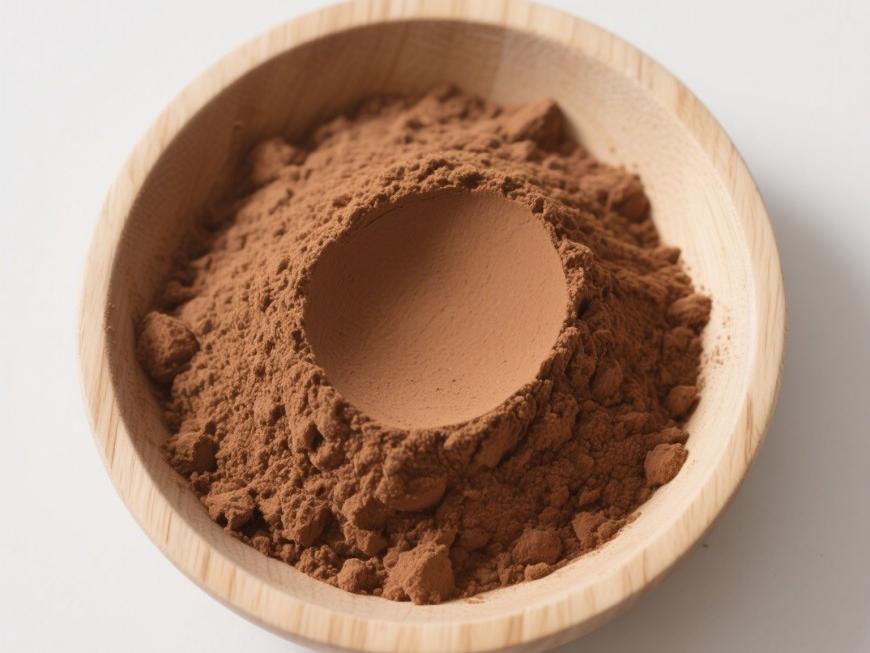Green Spring Technology Passionflower Extract - Fully Traceable & Compliant
Passionflower (Passiflora L.), also known as passion fruit or passionflower, is hailed as the “King of Juices.” Not only does it boast a unique flavor and rich nutritional profile, but its abundance of polyphenols, flavonoids, and functional compounds has made it a focal point in the natural health ingredients sector. However, the passionflower raw material industry has long grappled with core challenges: inconsistent variety origins, significant fluctuations in active compounds, lax pesticide residue controls, and an unstable supply chain. These issues hinder the industry's ability to meet market demands for standardized, safe, and traceable raw materials.
Green Spring Technology drives industry advancement through innovation, committed to providing clients with passion fruit extracts featuring full traceability, standardized production, and pesticide compliance. By systematically establishing a comprehensive quality control chain—from germplasm selection and standardized cultivation to green pest control and precision extraction—we ensure consistent, safe, and reliable product composition in every batch, empowering clients to develop more competitive health products.
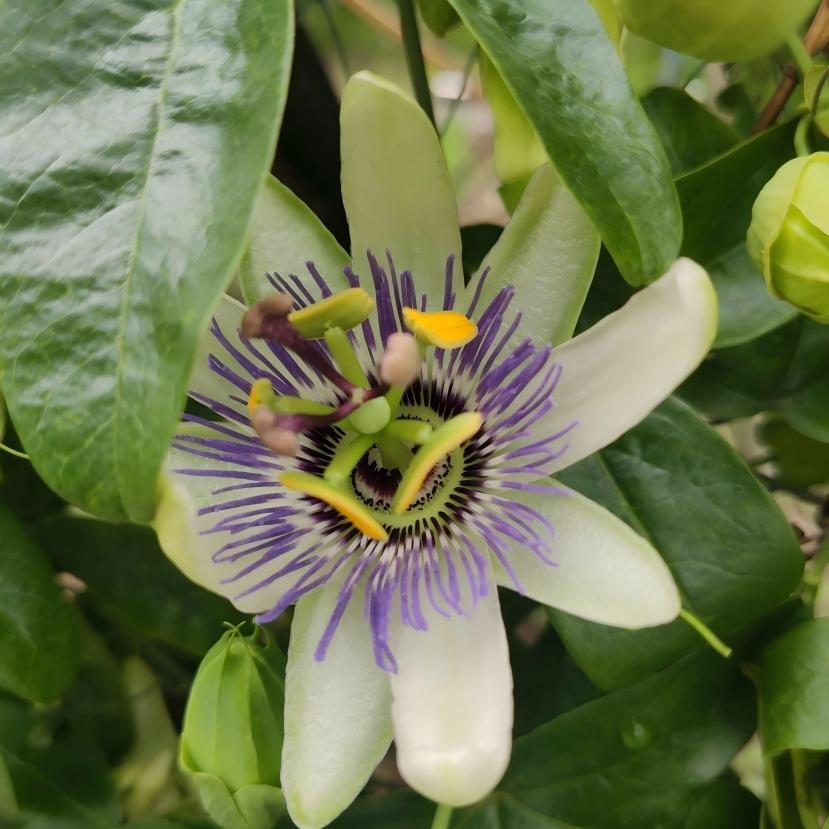
1 Selective Breeding: Building Stable, Compliant Passion Fruit Extracts Through Scientific Germplasm
The Passiflora genus boasts remarkable diversity with over 520 species, making it the most diverse group within the Passifloraceae family. In China, six core varieties—including the purple-fruited and yellow-fruited types—are primarily cultivated for edible purposes. These varieties exhibit biological characteristics such as asynchronous development of stamens and pistils, along with low self-pollination rates. While beneficial for maintaining genetic diversity, these traits pose challenges for achieving consistent fruit quality in large-scale cultivation.
Systematic germplasm research and breeding innovation are fundamental to ensuring high-quality, stable passion fruit raw materials. The industry currently faces widespread issues such as insufficient representativeness of germplasm repositories and gaps in biological and agronomic information. These directly result in significant variations among passion fruit raw materials from different sources regarding active ingredient content, pesticide residue control, and batch consistency.
Green Spring Technology deeply understands the decisive impact of germplasm origins on final extract quality. Therefore, we begin with scientific breeding, selecting varieties like “Pingtang No. 1” that exhibit excellent stress resistance and high nutritional value, and implement standardized and contract-based cultivation. Through systematic germplasm management, unified agronomic standards, and a green pest control system, we fundamentally ensure the stability of active ingredients and compliance with pesticide residue regulations in our raw materials.
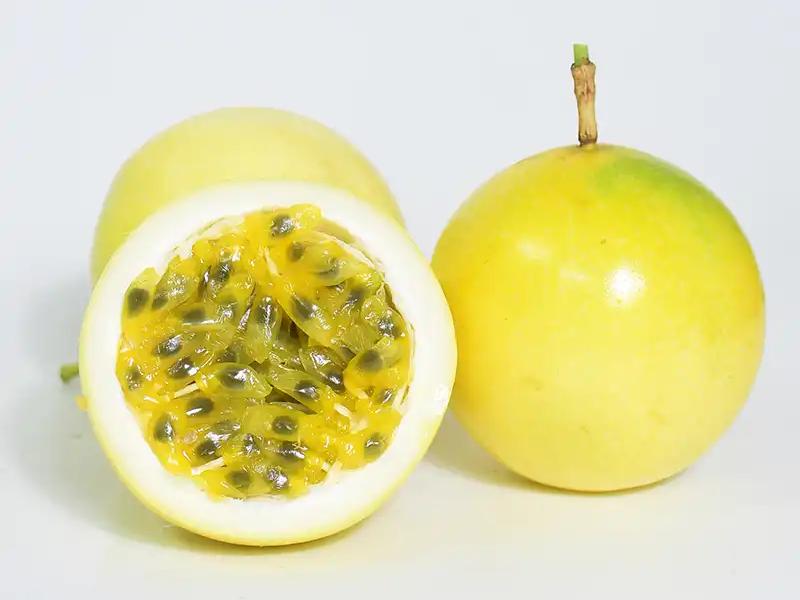
We are committed to achieving full traceability and control across the entire chain—from germplasm selection and cultivation management to extraction and processing. This enables us to provide customers with passionflower extracts featuring clearly defined components, consistent quality, and compliance with stringent safety standards, thereby enhancing product compliance and competitiveness in global markets.
2 Scientific Cultivation & Standardized Management
2.1 Scientific Cultivation Layout: Ensuring Raw Material Quality Through Precise Control of Origin and Varieties
Although passionflower cultivation has a long history in China, large-scale commercial farming has only rapidly developed in recent years. Current primary varieties include purple-fruited passionflower, yellow-fruited passionflower, and their hybrids, mainly distributed in tropical and subtropical regions such as Guangxi, Yunnan, and Hainan. While these areas offer suitable climates, significant differences exist among varieties in stress tolerance, fruit characteristics, and common diseases. These factors directly impact the active ingredient content, pesticide residue risks, and supply stability of raw materials.
Based on systematic research into ecological conditions and varietal characteristics across major national production areas, Green Spring Technology rigorously selects regions and varieties that meet our raw material quality requirements. We prioritize not only yield but also processing suitability and safety. For instance, building on varieties like the cold-resistant and adaptable “Tai Nong No. 1” and the flavorful “Golden Passion Fruit,” we prioritize contract farming bases with standardized management and low pest/disease incidence to minimize pesticide residue risks at the source.
By establishing a three-pronged raw material supply system integrating variety, production area, and cultivation standards, Green Spring effectively achieves uniform characteristics and controllable quality in passion fruit raw materials. We collaborate with partner bases to implement standardized agricultural practices and strengthen green pest control, ensuring not only high yields but also stable active components and high extraction safety.
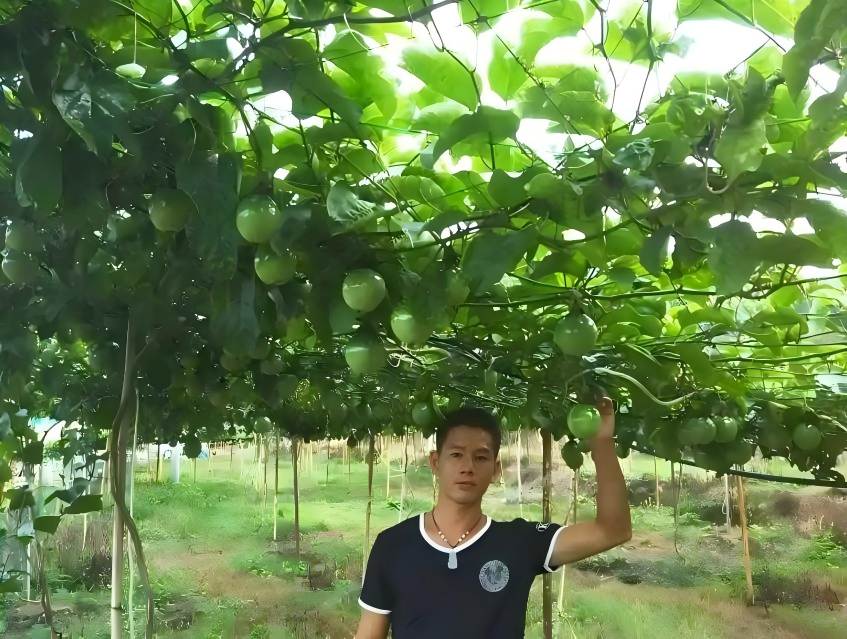
All these efforts aim to provide customers with passionflower extracts that are fully traceable, have stable composition, and strictly comply with pesticide residue standards, offering safe and reliable raw material assurance for downstream health food and beverage applications.
2.2 Standardized Cultivation Management: Ensuring Raw Material Safety and Quality Consistency Through Scientific Agronomy
The propagation and cultivation methods of passion fruit directly determine the content of active ingredients, pesticide residue risks, and batch consistency of the raw material. Traditional seed propagation leads to significant variation, while cuttings and grafting require high technical expertise and superior parent plants. Additionally, tissue culture technology remains immature and not widely adopted, making it difficult to ensure consistent seedling quality at the source and posing challenges for subsequent extract standardization.
Green Spring Technology recognizes that premium raw materials begin with standardized cultivation. We systematically manage the entire process from seedling propagation to harvest through our rigorous “Passion Fruit Raw Material Cultivation Technical Specifications”:
· Seedling Selection: Prioritize healthy, virus-free grafted seedlings or tissue-cultured seedlings to ensure strong disease resistance and consistent growth traits;
· Standardized trellising and water/fertilizer management: Optimize flat-roof or curtain-style cultivation based on regional conditions to enhance ventilation and light exposure; implement soil-tested formula fertilization with strict nitrogen-phosphorus-potassium ratios to ensure both yield and stable accumulation of functional components;
· Green pest control system: Prioritize prevention through ecological regulation, biological control, and physical traps (e.g., yellow sticky boards, insect-killing lamps) to reduce chemical pesticide use. For major diseases like stem base rot and viral infections, implement early biological interventions and healthy cultivation practices to eliminate pesticide residue risks at the source.
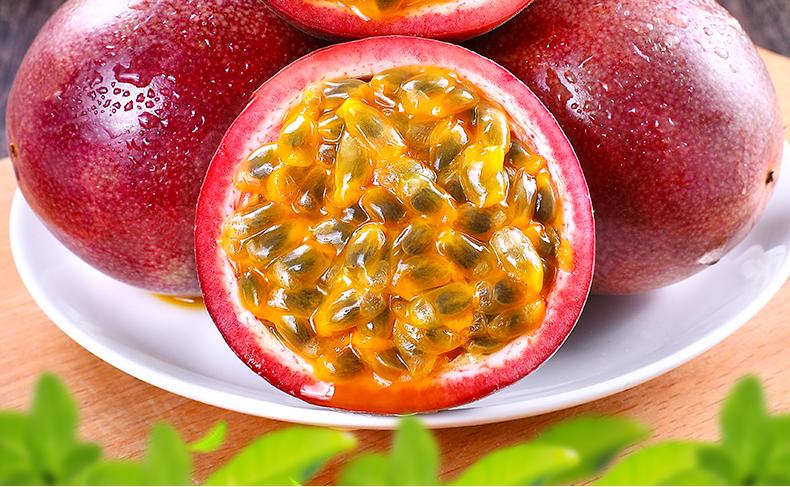
Through unified agronomic standards, comprehensive process documentation, and multi-point testing, Green Spring Technology achieves traceability, controllability, and verifiability from field to raw material. This ensures consistent potency and pesticide compliance in every batch of passion fruit extract, meeting the stringent safety and quality requirements of the food and health supplement industries.
3 Scientifically Analyzing Passion Fruit's Nutritional Advantages to Support High-Quality Extracts
Passion fruit is hailed as the “King of Juices” and the “King of Vitamin C.” Its juice is rich in protein, total sugars, vitamin C, minerals, and various amino acids, exhibiting significant antioxidant activity (e.g., superoxide dismutase activity reaching 184–239 U/mL). Nutritional profiles vary across cultivars: “Golden Fruit” excels in protein, minerals, and total amino acids, while “Purple Passion Fruit” boasts superior levels of total amino acids, sweet-tasting amino acids, and lysine, offering rich nutritional value.
Green Spring Technology places high importance on preserving and standardizing the natural nutritional components of raw materials. Based on in-depth research into the nutritional characteristics of different varieties, we select specific high-content varieties (such as high-amino acid or high-antioxidant types) as extraction materials, ensuring the final product has clear nutritional labeling and functional claims support.
Simultaneously, we emphasize the high-value utilization of the entire passion fruit. Beyond the juice, the peel contains valuable dietary fiber, pectin, and polyphenols. Through innovative processing techniques, Green Spring achieves comprehensive utilization of peel by-products, reducing resource waste while providing clients with diversified natural ingredient solutions including juice extracts, peel fiber, and pectin.
Leveraging a fully traceable standardized management system, Green Spring ensures every stage from cultivation to production meets stringent quality and safety standards. We provide clients with passionflower extract products featuring stable nutritional profiles, compliant pesticide residue levels, and sustainable sourcing, empowering them to develop more competitive health products.
4 Green Spring Technology supplies passionflower extract ingredients with full traceability, standardized processes, and compliant pesticide residue levels
Scientifically targeting functional compounds, Green Spring achieves high-value passionflower extraction through standardized processes
Passionflower is rich in multiple high-value functional active ingredients: polyphenol content in the peel reaches 15.1 mg/g, flavonoids in the seeds peak at 102.37 mg/g, and peel polysaccharides exhibit significant antioxidant and immune-modulating potential. These components exhibit distinct distribution patterns across different plant parts, providing a robust foundation for diverse applications in health products.
Green Spring Technology leverages systematic component research and precision extraction techniques to achieve standardized and scalable production of passionflower functional ingredients solution:
· Targeted extraction of polyphenols and flavonoids: Based on scientific evidence demonstrating the role of key flavonoids like luteolin and isoquercitrin in blood sugar regulation, neuroprotection, and anti-inflammation, we select high-content varieties. Using gentle yet efficient extraction technology, we maximize retention of active components, ensuring consistent core compound levels and defined efficacy in every batch.
· Synergistic Development of Fruit Peel Polysaccharides: Moving beyond traditional single-use juice models, we innovatively apply modern techniques like ultrasound-assisted extraction to develop fruit peel polysaccharides. This method achieves high extraction efficiency while avoiding solvent residues. The resulting product exhibits excellent antioxidant and immune-modulating activity, suitable for diverse formulations such as solid beverages and health capsules.
· Full Ingredient Traceability and Controllable Quality: We focus on factors like cultivar and cultivation methods affecting carotenoid content from the planting stage. Combining green farming standards with comprehensive pesticide residue monitoring ensures pure, safe raw materials. Standardized extraction and stringent quality control guarantee stable, contaminant-free active ingredients in final products that meet global compliance requirements.
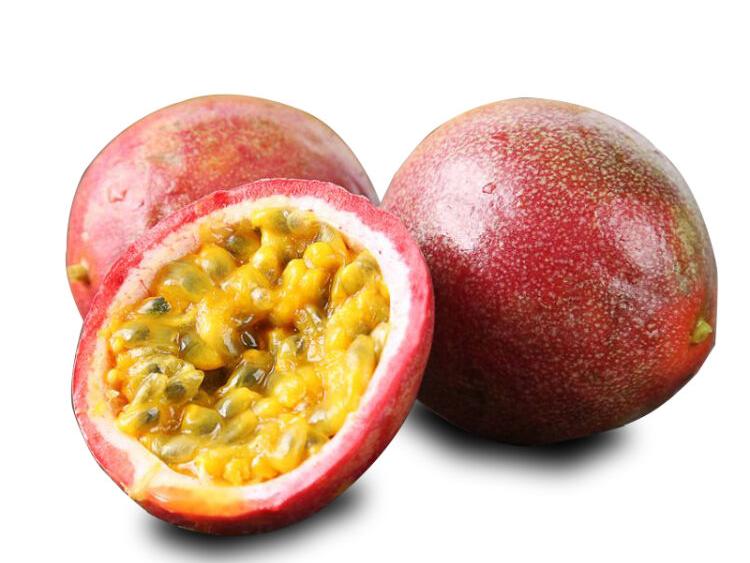
Green Spring Technology is committed to providing clients with passionflower extracts backed by robust scientific evidence, featuring transparent ingredients and consistent quality. This supports innovation in specialized functional products targeting anxiety relief, blood sugar management, antioxidant benefits, and immune enhancement.
5 Innovative Processing and Whole-Fruit Utilization: Achieving Standardized Extraction of Passionflower's High-Value Components
Low comprehensive utilization of passion fruit poses an industry-wide challenge. The peel, accounting for 40–50% of the fruit, is often discarded despite its potential. Seeds, with over 60% oil content and more than 80% unsaturated fatty acids, remain underdeveloped. Green Spring Technology drives high-value whole-fruit development through technological innovation. Standardized processing maximizes functional component extraction while ensuring raw material compliance and stability.
· Green Seed Oil Extraction: We employ modern techniques like supercritical CO₂ extraction to obtain passion fruit seed oil, eliminating organic solvent residues. This ensures clear oils with high antioxidant activity (DPPH radical scavenging rate exceeding 80%), while achieving pollution-free production with zero pesticide residues—meeting premium food and cosmetic ingredient standards.
· Gentle Juice Processing with Component Retention: Addressing passionfruit juice's high acidity and susceptibility to degradation, Green Spring Technology employs ultra-high pressure non-thermal sterilization. This extends shelf life while maximizing retention of heat-sensitive components like vitamin C and flavonoids, ensuring undiminished nutritional and functional activity in extracts.
· High-value utilization of fruit peels: We transform traditionally discarded peels into high-fiber powders, natural pectin, and polyphenol extracts. Through standardized processing like ultrasonic sugar penetration and low-temperature spray drying, we effectively eliminate off-flavors while improving yield and solubility, delivering natural, clean-label food ingredients to customers.
· Comprehensive Quality Control Ensures Freshness and Safety: Starting with harvest maturity control, Green Spring implements strict preservation and pre-processing protocols. Combined with cold chain logistics and full traceability management, this effectively delays post-harvest quality deterioration, ensuring each batch of raw materials meets premium extract standards for freshness and safety.
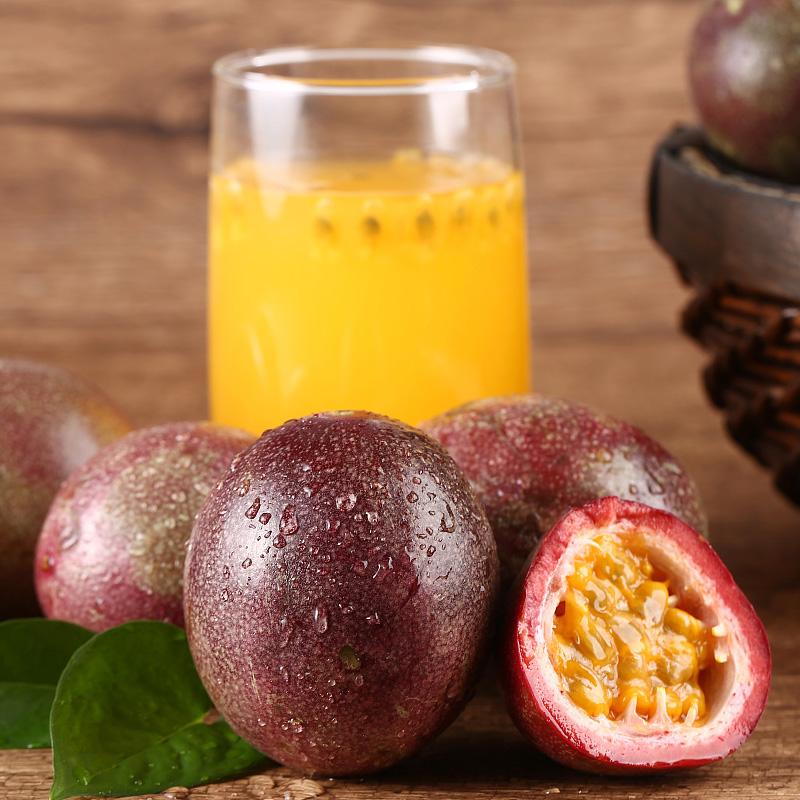
Through full-industry-chain integration and innovative processing technologies, Green Spring Technology achieves a truly sustainable passionflower development model—utilizing every part from peel to seed. This delivers customers a diverse range of passionflower extract products featuring stable composition, compliant pesticide residues, and robust scientific validation.
6 Industry Synergy: Infusing New Momentum into the Passion Fruit Sector Through Technology and Standardization
The passion fruit industry holds immense potential, yet currently faces core challenges including insufficient germplasm resource development, extensive cultivation management, difficult pest and disease control, low levels of deep processing, and outdated preservation techniques. These bottlenecks severely limit the stability, safety, and high-value conversion of raw materials.
Green Spring Technology deeply understands how every link in the industrial chain impacts final extract quality. We are transforming these challenges into opportunities through concrete actions:
· Promoting germplasm optimization and standardized cultivation to enhance raw material bioactive content and stress resistance from the source;
· Integrating green pest control and smart farming practices to effectively address industry challenges like stem base rot and viral diseases, ensuring pesticide residue compliance and stable supply;
· Innovating component extraction and whole-fruit utilization technologies to achieve high-value development from juice and peel to seeds, providing customers with standardized, functionally defined extract raw materials;
· Establishing a comprehensive traceability system from cultivation to extraction, guaranteeing consistent quality and safety control for every batch.
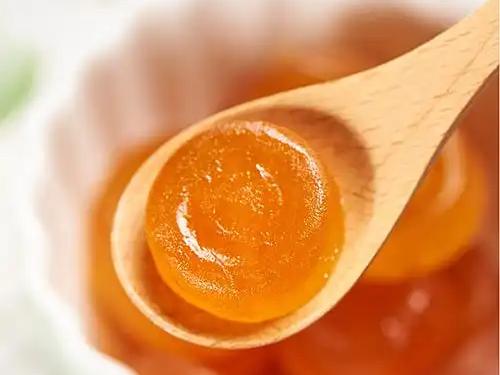
We firmly believe that only by empowering the industry with technology and defining quality through standards can we unlock the true value of passion fruit. Green Spring Technology is committed to collaborating with industry partners to advance the passion fruit sector toward standardization, technological innovation, and high-value utilization.
Contact our expert team today at helen@greenspringbio.com or WhatsApp: +86 13649243917 to obtain samples of passion fruit extracts with full traceability and pesticide residue compliance, along with detailed quotations. Let us provide you with stable, reliable, and high-quality functional ingredient solutions!
References
[1]CERQUEIRA-SILVA C B M , JESUS O N , SANTOS E S L , et al. Genetic breeding and diversity of the genus Passiflora: p rogress and p ersp ectives in mo- lecular and genetic studies.[J] . International journal of molecular sciences , 2014 , 15(8) : 14122-14152
[2] Huang Aijun, Wang Ying, Hu Xiaolin. Research progress on virus diseases of passion flower[J] . Southern China Fruit Tree, 2019 , 48(3) : 141-146
[3] Ma Jinkui, Li Ke, Wei Bingdun, et al. Optimization of supercritical CO2 extraction process of passion fruit seed oil and its in vitro antioxidant activity[J] . Food and Machinery, 2017 , 33(7) : 155-159
[4] KWONG Ruibin, YANG Gui, KONG Fanli, et al. Status quo and development countermeasures of passion fruit industry in Guangdong Province[J] . Guangdong Agricultural Science, 2019 , 46(9) : 165-172
[5]FEUILLET C , MACDOUGAL J M. A new infrage- neric classification of Passiflora L. (Passifloraceae) [J] . Passiflora , 2003(13) : 34 - 38
[6] JI Fang. Observation of growth characteristics and selection of Passiflora [D]. Kunming: Southwest Forestry College, 2008
[7] Tian JK, Dong LX, Ma S, et al. Research on the breeding system of passion flower [J]. Modern Horticulture, 2019(18) :8-9
[8]CERQUEIRA-SILVA C B M , FALEIRO F G , JE- SUS O N , et al. Passion Fruit (Passiflora spp.) Breeding[ A] . In : Jameel M. Al-Khayri et al. Ad- vances in Plant Breeding Strategies : Fruits[ M] . Ger- man:Springer , 2018 : 929-951
-
Prev
Green Spring Technology's Fully Traceable Passion Fruit Ingredient Solution for the Entire Industry Chain
-
Next
Standardized Passion Fruit Extract Empowers Stable and Efficient Product Formulations


 English
English French
French Spanish
Spanish Russian
Russian Korean
Korean Japanese
Japanese